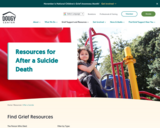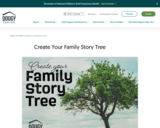
Grief at any age can be overwhelming. Use the filters on this page to narrow down our extensive library of support resources to find help.
- Subject:
- Other
- Material Type:
- Activity/Lab
- Provider:
- Dougy Center
- Date Added:
- 11/14/2022

Grief at any age can be overwhelming. Use the filters on this page to narrow down our extensive library of support resources to find help.

It can be so much easier to start a conversation when kids begin it themselves…without words. Share these open-ended drawing activities and ask kids to tell you about what they've drawn. There are five “canvases” to choose from.

Some kids and teens, and even adults, worry they will forget stories and memories about the person in their lives who died. Beads can help symbolize and remind us of these special memories. Create a beaded memory bracelet with beads that mean something to you or to the person who died. You can also draw pictures or write stories about the memories you think of when you look at each bead. Make a bracelet for yourself or a family member, or download and print this activity sheet to decorate a bracelet using crayons or markers.

One way to remember and feel closer to your person who died is to hear and tell stories about their life. We all have stories we like to share. Some are funny, some may be sad, but they all say something about the person and the life they lived.

It can be comforting to keep mementos that remind you of special people, places, or experiences. A memento box is a perfect place to keep things that are important to you and your family. Get creative and decorate it however you want!

Download this activity sheet to create a special way to remember your person who died. In the center of the flower place a photo, draw a picture or write the name of your person who died. In each of the flower petals, write something special about the person or a memory you have.

The Crying Quilt lesson plan.

Grief at any age can be overwhelming. Use the filters on this page to narrow down our extensive library of support resources to find help.

When someone in your life has has died or has an advanced serious illness, it can feel like you're living on a carnival ride with ups and downs, twists and turns. Through this activity, explore what your grief feels like right now, and what questions they may have for what comes next. We recognize that for many people who are grieving, life can be stressful and unpredictable, and it's ok to not feel ok.

Cut out the strips on this page. Then enjoy spending time
together writing or drawing a memory on each one. Now link
these strips by looping them to one another, using tape
or glue to create a chain of memories. Hang up your memory
chain or keep the memory strips in a box, adding new
memories and occasionally reading through them together.

When someone in the family has an advanced serious illness, all family members feel the impact. Choose a filter to access which type of resource you would like to view for everyone who is impacted

Sesame Street: Grief Toolkit Video Playlist

Whether it was a parent, sibling, partner/
spouse, grandparent, close friend, or
other family member, we're glad you
found your way to this tip sheet.

You're likely reading this because someone you're close to is grieving. Whether they had a parent, sibling, partner, close friend, or other family member die, you might be wondering what to say or do and not say or do. Grief is confusing, both for those grieving and for those who care about them. It can feel awkward, scary, uncomfortable,confusing, and surreal. Just as you might not know what to do or say, people who are grieving often aren't sure what they need. That's why “Let me know if I can do anything” can be hard to hear. If you've already said that, it's okay — almost everyone does.